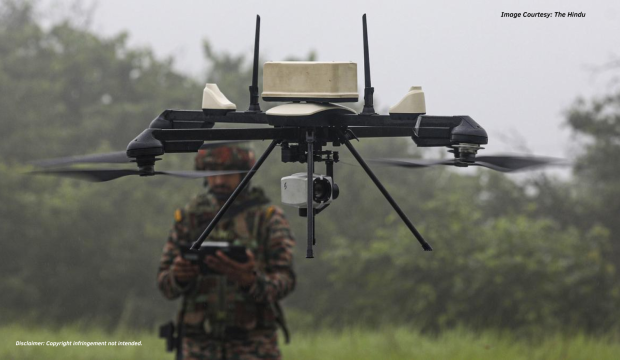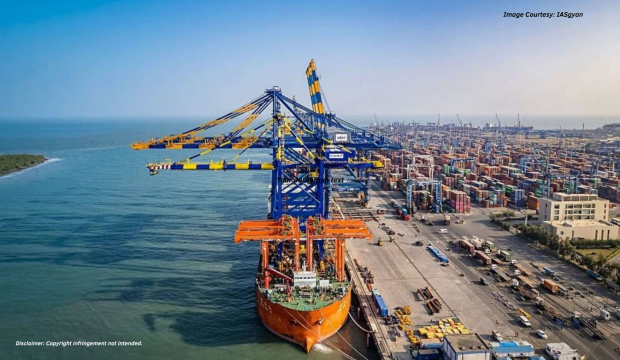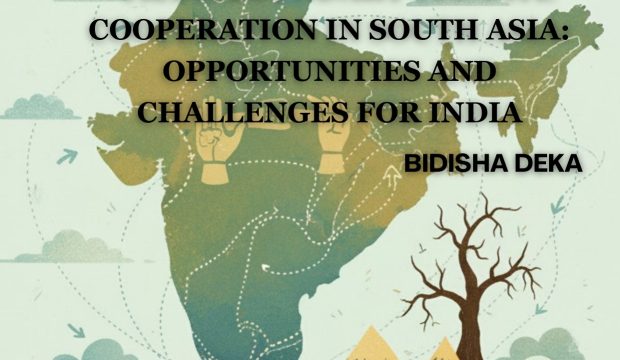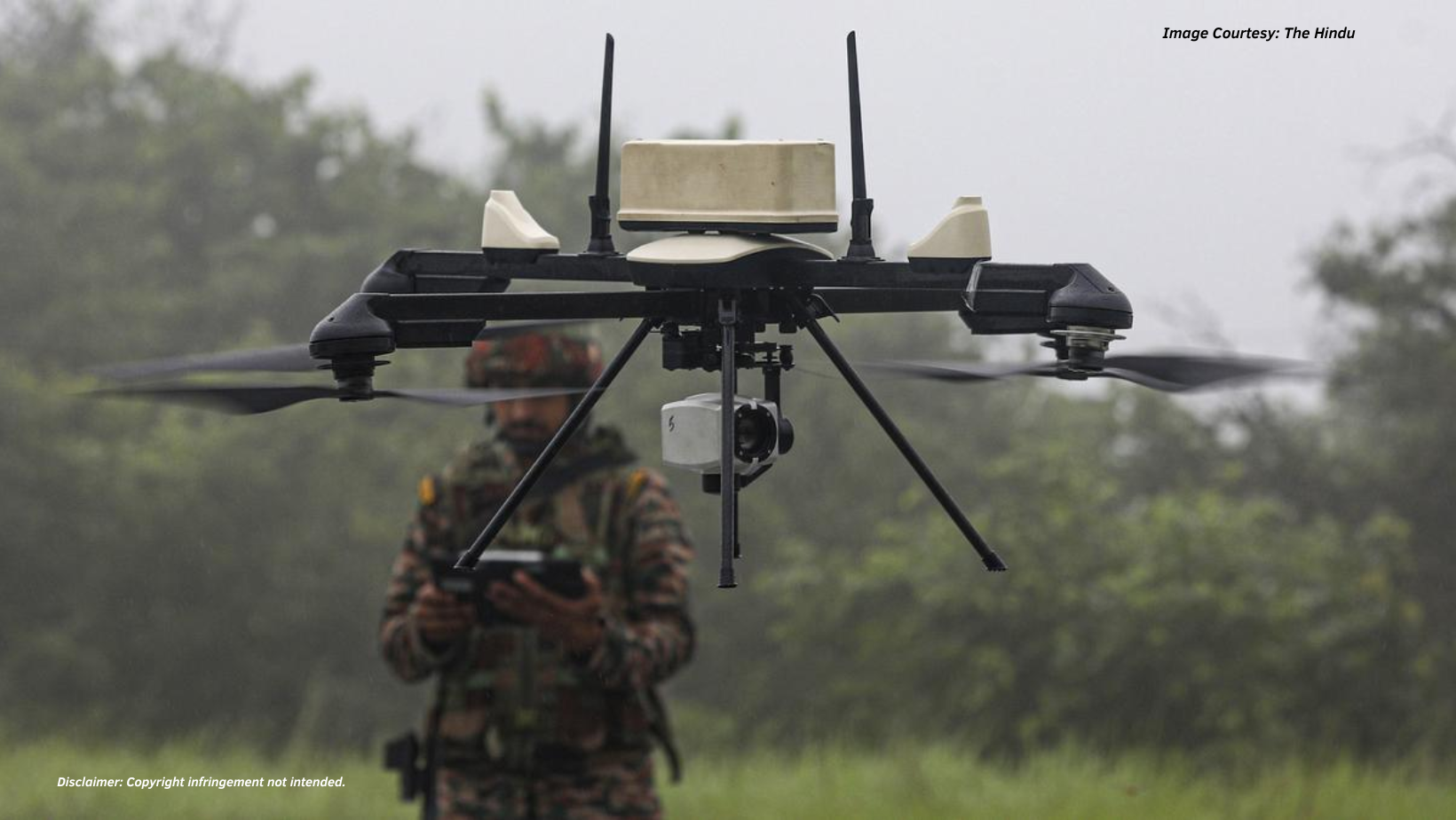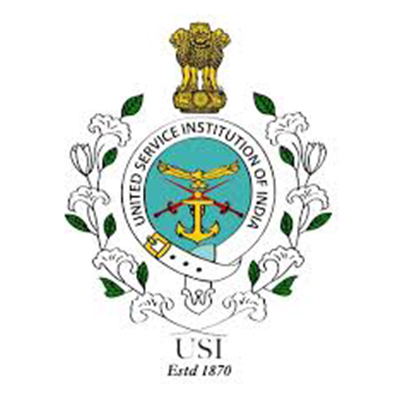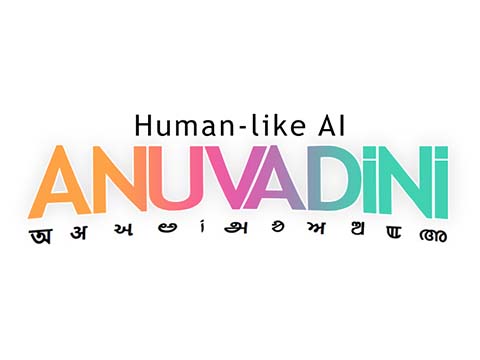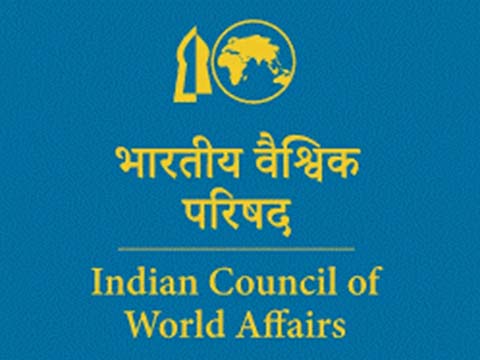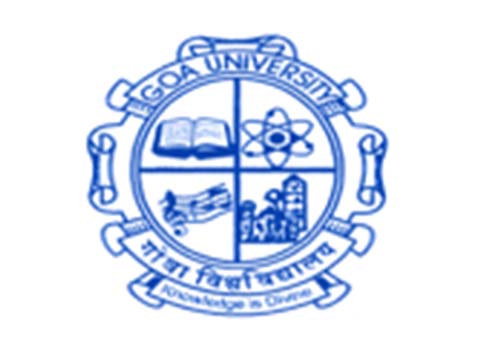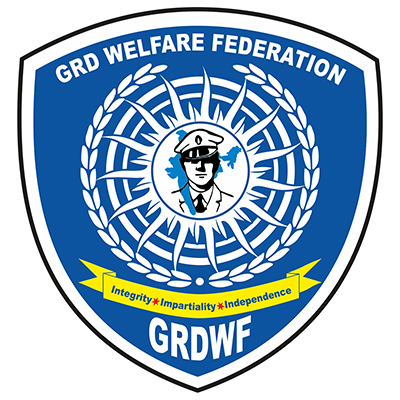Abstract
With challenges facing the Belt and Road Initiative (BRI), China’s Global Development Initiative (GDI) has emerged as its new strategic tool to reshape global governance, broaden political and economic influence, and counter the US-led international order. As China shifts focus from the BRI to the GDI, its human intelligence (HUMINT) strategy is expected to adapt as well. Unlike the BRI’s large-scale projects, the GDI’s focus on smaller, community-based initiatives allows Chinese intelligence agencies to foster relationships with key local stakeholders for gathering information and monitoring local dynamics more discreetly. Understanding China’s use of the GDI to monitor, influence, and shape the global order is critical for assessing its broader ambitions. This brief examines the integration of China’s HUMINT operations within the GDI framework, analysing evolving patterns and potential impacts on international security.
Key Words
Human Intelligence (HUMINT), Global Development Initiatives (GDI), Belt and Road Initiative (BRI)
Introduction
Major Initiatives under Xi Jinping
Under Xi Jinping leadership, China has leveraged its financial resources, surplus construction capacity, and largest human resource (till mid 2023) to launch four major global initiatives i.e. the Belt and Road Initiative (BRI) in 2013, the Global Development Initiative (GDI) in September 21, 2021, the Global Security Initiative (GSI) in 21 April 2022, and the Global Civilization Initiative (GCI) in March 15, 2023. The recent tripartite initiatives (GDI, GSI, and GCI) promote China’s vision of global governance, security, and developments, aiming to strengthen the CCP’s domestic legitimacy, reform global governance, expand China’s influence in the developing world, and challenge the US-led liberal international order.3 China’s motivations for launching global initiatives include stimulating its economy, managing excess industrial capacity, expanding its international influence, securing energy resources, and promoting regional stability. The three new initiatives remain largely at the level of political slogans, but unlike the development-first approach of the BRI, China’s active involvement in recent security challenges, such as the Russia-Ukraine war, Israel-Palestine conflict, Iran-Saudi Arabia normalisation, and Afghanistan reconstruction, signals its intent to play a more prominent role in global security.4
Xi Jinping’s “Community of Common Destiny for Mankind”,*[1] central to China’s foreign policy since 2013, promotes global cooperation, mutual respect, and shared development. Though first mentioned in Chinese discourse around 2007 and highlighted by Hu Jintao at the 18th Party Congress, it gained greater significance after Xi’s 2013 speech in Moscow. This concept now shapes China’s approach to global governance, integrating economic, security, and cultural cooperation to address global challenges.5 The new Law on Foreign Relations, passed on June 28 2023, makes building a “community of common destiny for mankind” a legal imperative for China.6
China launched the BRI in 2013, using infrastructure investments to build stronger ties with the Global South, particularly after the global financial crisis. Its launch coincided with the U.S. “Pivot to Asia,” leading to competing initiatives like B3W and Global Gateway, aimed at countering China’s expanding influence.7 China’s economic diplomacy through the BRI is facing growing criticism both domestically and internationally. At home, a slowing economy and low returns on foreign investments have diminished support for large-scale projects. Globally, the BRI is accused of fostering debt traps, environmental harm, corruption, and human rights violations, while being perceived as financially risky and extractive. With the BRI stalled, China’s focus has shifted to smaller-scale grants, capacity building, and training programs under the GDI which avoid the high costs of BRI infrastructure projects.8
GDI
*The Community of Common Destiny for Mankind is a vision promoted by China that calls for global unity in addressing shared challenges like poverty, climate change, and security. Proposed by President Xi Jinping, this concept emphasizes cooperation, mutual respect, and interconnected development among nations, aiming to create a harmonious global community. It aligns with China’s broader foreign policy goals and initiatives, such as the Belt and Road Initiative, to foster international ties and collective progress.
Liu Hongwu of Zhejiang Normal University describes the GDI as embodying China’s core belief from the past 40 years: that “development” is key to solving numerous global challenges. This philosophy drives the GDI’s approach to tackling issues through sustainable growth. Yu Yunquan adds that the “China Model” provides a framework for other developing nations and reinforces China’s responsibility as a global power. He stresses that China should share development opportunities, especially with developing countries, and affirm its role as a provider of global public goods.9 Basically, the core objective of the GDI is to steal the international discussion on the global development agenda, bring it under Chinese tutelage, and infuse it with Chinese ideals.10
The GDI is directly complemented by GSI. Post launch of GSI in April 2022, the CCP officials have promulgated the notion that “security is a prerequisite for development, and development is a guarantee for security”.11 In March 2023 Xi called for “better integration of development and security” at the National Congress.”12 GDI and GSI offer a “blueprint” for China to reshape the global order and likely form part of a broader set of concepts that will continue to evolve, collectively aimed at establishing a more cohesive framework for a new global governance system. The twin initiatives reflect a shifting Chinese worldview in which domestic policies are projected externally. Beijing seeks to create an environment that bolsters its security, prosperity, and sovereignty interests.13
The GDI has gained significant traction within the UN system and in the field of development. During its launch at the 76th UN General Assembly in September 2021, Xi Jinping linked the GDI to the UN’s 2030 Sustainable Development Goal (SDG) Agenda. By September 2024, over 100 countries and various international organisations, including the UN, have shown support and participated in the GDI, with more than 80 countries joining the Group of Friends, underscoring the GDI’s expanding global influence.14 China’s Foreign Ministry has skillfully leveraged an obscure UN mechanism to quickly establish the “Group of Friends” for the GDI. Through this initiative, Beijing seeks to boost policy dialogue, strategically coordinate with UN development agencies, create new platforms like the Global Development Promotion Center Network, and elevate China’s image as a global leader in development, capacity-building, and knowledge sharing.15 On September 20, 2022, UN Secretary-General António Guterres also voiced support for the GDI in advancing the SDGs, highlighting it as a blueprint for tackling global challenges and “setting things right”.16
The GDI is broader and more conceptual than the BRI, focusing on promoting discursive concepts of Chinese-style development.17 The GDI seeks to establish a more equitable and inclusive global development order, aiming to realise a “shared future” by empowering developing nations and promoting collective prosperity. It emphasises core principles such as prioritising development, adopting a people-centered approach, ensuring benefits for all to leave no country or person behind, fostering innovation-driven progress, promoting harmony between humanity and nature, and focusing on tangible outcomes.18 The GDI serves as a vehicle for Chinese economic statecraft, promoting China’s state-centric development model in line with its domestic and geopolitical aims. It seeks to redefine narratives around governance and human rights, countering the Western emphasis on civil and individual rights. Additionally, the GDI acts as a diplomatic strategy to challenge the US and its allies security-focused Indo-Pacific strategies, advocating for China’s “win-win” economic cooperation versus the perceived “zero-sum” alliances of the US.19
The integration of the Maritime Silk Route (MSR), Health Silk Route (HSR), Digital Silk Road (DSR), and the Space Information Corridor (SIC) into the BRI has allowed China to efficiently monitor, gather data, analyse, control, and potentially disrupt global communications, particularly within countries participating in the BRI.20 In its early stages, the GDI, like the BRI, holds potential to reshape international development cooperation, increasing China’s involvement in the internal affairs of partner nations. Through its distinct development model and approach to human intelligence (HUMINT), China is positioned to establish a widespread intelligence network, deploying personnel worldwide. Equipped with advanced technology, this network could exploit intangible means for surveillance and governance control under the GDI framework. Identifying key areas where China may leverage the GDI to monitor, influence, and regulate the global order is critical to understanding its broader ambitions to reshape governance under the guise of development aid.
Chinese HUMINT Operations
China has adopted a unique approach to HUMINT operations. Contrary to the global trend of relying on a few specialised agents and advanced technology for gathering intelligence, China has employed its citizens and diasporas under the garb of global connectivity BRI projects and has smartly integrated its cheap and advanced global surveillance mechanism to collect colossal information and thereafter passage to China. The Chinese unique HUMINT method popularly known as the “thousand grains of sand” or “human wave” approach, the policy of thousand grains of sand or mosaic approach or human wave or citizen spying,**2,21 entails using large numbers of amateur ethnic Han individuals abroad to collect small, seemingly insignificant pieces of information, which are later aggregated in China for broader analysis. With global presence, China has mobilised its population and diaspora using concepts like “Guanxi, Face, and Shame.”***3
Unlike other nations, where espionage typically involves corrupt individuals, China’s approach focuses on “good people doing bad things.” China employs its regular citizens and subject matter experts to gather bits of information during routine activities. This
**The “Thousand Grains of Sand” or “Human Wave” approach refers to a Chinese intelligence strategy that relies on gathering vast amounts of information through many individuals, rather than a few dedicated spies. This approach often involves ordinary citizens, business people, students, and tourists who may collect and report information, intentionally or unintentionally, while abroad. Instead of depending solely on professional intelligence officers, this “mosaic” or “citizen spying” tactic allows Chinese intelligence agencies to piece together small bits of information from diverse sources, creating a comprehensive picture of foreign environments, technologies, and strategic areas of interest. This widespread, decentralized method helps China amass intelligence discreetly and efficiently, often blending in with legitimate activities like cultural exchange or trade.
***In Chinese culture, *Guanxi*, *Face*, and *Shame* are vital social concepts. *Guanxi* (关系) refers to a network of reciprocal relationships that guide personal and professional interactions, enabling trust and mutual support. *Face* (面子, Miànzi) represents dignity and social standing; losing face is seen as damaging, while gaining face enhances respect and influence. *Shame* (羞耻, Xiūchǐ) acts as a social regulator, as avoiding shame maintains harmony and social reputation. Together, these principles influence behavior, encouraging people to act in ways that honor others, protect relationships, and uphold societal values, with strong emphasis on community respect and social harmony.
discursive method complicates foreign counter-intelligence efforts, as it obscures the identification of operatives, making it harder to track the nature and intent of intelligence operations. Additionally, it allows China to downplay state involvement in espionage activities.
Rob Joyce, while drawing attention towards a range of Chinese intelligence collectors has compared it with the Russian model and illustrated “I kind of look at Russia as the hurricane. It comes in fast and hard. Chinese, on the other hand, is climate change: long, slow, pervasive.”22 The long, slow and pervasive action of Chinese involvement in other countries can also be compared with the ‘Boiling Frog Syndrome’ wherein a frog is slowly boiled alive. The premise is that if a frog is put suddenly into boiling water, it will jump out, but if the frog is put in tepid water which is then brought to a boil slowly, it will not perceive the danger and will be cooked to death.”23 This metaphor recognises tendencies amongst numerous countries including Pakistan and Sri Lanka in our immediate neighborhood, wherein their adaptive tendency to adjust to Chinese situations has almost turned them into the vassal state of China.
CHINESE HUMINT OPERATIONS: TRANSITION FROM BRI TO GDI
Post 2013, BRI has become a key platform for leveraging diverse Chinese Intelligence, Surveillance, and Reconnaissance (ISR) activities globally. Under the guise of the BRI, Chinese HUMINT operations target a wide range of individuals, including political leaders, bureaucrats, military personnel, business figures, civil society, pressure groups, journalists, media outlets, academics, students, researchers, diasporas, policymakers, think tanks, and film industry. The BRI and intelligence operations had worked in tandem: the BRI serves as a platform for intelligence collection, while intelligence and influence campaigns are used to mitigate criticism of BRI projects.24 The following paragraphs highlight the envisaged shift of Chinese HUMINT operations from the declining BRI to the evolving GDI, by its intelligence agencies to advance future global dominance goals.
Chinese global construction efforts under the BRI have frequently resulted in an increased Chinese civil/military presence abroad and the permanent settlement of Chinese nationals for training and development, often on their terms through the purchase / leasing of land for People Liberation Army (PLA) bases, Chinese colonies, or agricultural projects. In response to rising attacks on Chinese personnel and assets, there has been a significant uptick in the use of Chinese security contractors to safeguard citizens and property overseas. The deployment of PLA and police forces is anticipated in unstable regions, particularly in Asia and Africa, which will inevitably enhance China’s HUMINT capabilities in these territories.
China’s 2015 and 2019 Defence White Papers emphasised the need for far seas protection to safeguard its overseas interests and establish itself as a global power.25 In 2015, China enacted a controversial counter-terrorism law that authorised its armed forces to conduct operations abroad, directing the PLA to explore options for protecting these overseas interests. In June 2022, Xi Jinping signed new regulations for “non-war” military operations, enabling the Chinese military to carry out “special military operations” overseas. The new law requires communication companies to cooperate with security agencies. 26 Agreements for intelligence sharing, joint military or police training, and arms supply with foreign forces are crucial for conducting operations on foreign soil. Following the launch of the BRI, China has already formed such arrangements through frameworks like the Quadrilateral Cooperation and Coordination Mechanism (QCCM) in Counter-Terrorism27, the Shanghai Cooperation Organisation (SCO)28, and various bilateral agreements with South Asian countries, including Nepal,29 Pakistan,30 Afghanistan,31and Bangladesh32. The GDI, like the BRI, is anticipated to use international and bilateral partnerships to advance intelligence operations under the guise of development. Through numerous multilateral projects and agreements under GDI, China will gain access and influence in partner countries, position operatives within roles in development, technology, and aid. China’s extensive bilateral ties for intelligence-sharing and collaboration under BRI could be replicated under GDI, granting deeper access to sensitive networks and infrastructure. This overlap between development and intelligence will allow China to leverage these platforms for information gathering, influence, and operational footholds in strategic regions.
With the construction of naval infrastructure at Gwadar Port and defence factories in Pakistan, under CPEC, the BRI project has already taken a military turn. A military dimension is further consolidated through law wherein China has pushed for civil-military integration by constructing dual-use (commercial and military) overseas infrastructure projects in BRI. In future, GDI is also expected to further reinforce PLA and HUMINT capability to be operated abroad through Military Civil Fusion (MCF) under the garb of development. MCF aims to enable China to become an economic, technological, and military superpower by fusing the country’s military and civilian industrial and Science & Technology resources. The PLA also uses military diplomacy through the MCF to gather intelligence, learn new skills, benchmark PLA capabilities, and build interoperability with foreign partners.33
China’s global diaspora, estimated at around 60 million people across more than 150 countries, plays a vital role in supporting the BRI. Their local knowledge and business expertise have been essential in furthering China’s national development goals. Officials now see the diaspora as crucial not only for technological advancements through multinational collaborations but also as key contributors to broader geo-economic ambitions. Chinese communities along BRI routes act as guides, intermediaries, and active participants, utilising their deep understanding of local conditions. In 2016, China began hosting annual conferences for overseas Chinese involved in the BRI,34 and similar initiatives are anticipated for the GDI in the future.
In consonance with the “thousand grains of sand” approach, Chinese intelligence agencies are heavily involved in both inbound and outbound education for intelligence gathering. US intelligence has warned that China employs student spies to steal secrets.35 Leaked documents reveal that Chinese authorities utilise students in the BRI through the United Front Work Department (UFWD), which oversees 42 local organisations and 220,000 members abroad.36 The UFWD uses scholarships to attract international students and send Chinese students abroad, while groups like the Chinese Students and Scholars Association (CSSA) help recruit party members and monitor overseas students, causing many to self-censor for fear of losing scholarships or facing harassment. China also fosters relationships with educators and young leaders through funded trips and free Mandarin teachers for establishing informant networks to monitor students abroad. China’s educational diplomacy aligns closely with the BRI, providing scholarships and funding to universities in BRI countries, which helps counter its criticism. Significant aid has been directed toward attracting foreign students, particularly from Asia and Africa; in fact, two-thirds of international students in China came from BRI nations, and 61% of government scholarships in 2016 were awarded to these students. Among the ten countries receiving the most Chinese government scholarships that year, eight were BRI partners. 37 Initiatives like the Silk Road School at Renmin University, enrolling students from BRI countries, further reflect this focus.38 As the largest exporter of students, China wields considerable influence in European universities also, where Chinese students made up 22% of international students in 2019, contributing $4 billion. A recall of these students could severely impact European higher education.39 According to a HCOAMS report, the US Department of Education lacks a coherent strategy to protect American and Chinese students from harassment and suppression by CCP-affiliated groups, such as Confucius Institutes (CIs) and CSSA.40
The cultural institutions too have reportedly been utilised alongside the BRI to connect with Chinese students studying abroad, and their seemingly benign activities have played a significant role in China’s emergence as the world’s second-largest economy. The rapid growth of CIs, and Confucius Classrooms (CCs) from 2004 to 2018, followed by some closures in European countries and US due to intelligence concerns.41 As per Chinese Ministry of Education 2019 report, of the more than 525 CIs and more than 1113 CCs around the world, 154 CIs and 149 CCs are located in 54 BRI countries42and most of them were established after the BRI’s launch in 2013, with no reports of closures in BRI nations. By end of 2023, the number reduced to 496 CI and 757 CC in over 160 countries.43 Other cultural institutions like the CSSA44 and the China Association for International Friendly Contact (CAIFC)45 are also actively involved in conduct of covert intelligence operations under the guise of cultural events and educational programs.
With shifting Chinese focus from BRI to GDI, China is expected to transition its unique HUMINT strategy from BRI platform to GDI platform. Through the GDI, China can establish educational and cultural institutions, ostensibly aimed at promoting cultural exchange and development. However, these institutions can also serve as discreet platforms for intelligence gathering, recruitment, and influence-building, particularly by fostering ties with students, academics, and policymakers. By embedding its initiatives within community projects and local partnerships, China gains structured access to local networks and key figures, enhancing its ability to gather intelligence and shape perceptions. As the GDI extends across Africa, Latin America, and Asia, China can leverage these channels to strengthen its diplomatic reach while discreetly building HUMINT networks that support its strategic interests.
According to the report “The Road Ahead: Cyber Security in 2020 and Beyond,” recent cyber espionage associated with the BRI has targeted various sectors, including government, transportation, energy, defence, space, media, and telecommunications. The GDI also includes numerous small projects aimed at poverty alleviation, food security, pandemic response, vaccines development, financing, climate change, sustainable development, industrialisation, and digital connectivity,46 which are directly or indirectly linked to the sectors targeted by the BRI. Evidence of the GDI’s growth in India’s vicinity is reflected in the 2023 GDI Progress Report by CIKD, which highlights China’s expanding influence during post-COVID recovery assistance in Nepal and Pakistan, the Smiling Children Feeding Program in Nepal, pest monitoring in Bangladesh and Pakistan, and renewable energy technology transfers to Sri Lanka, disbursement of a number of agricultural quality upgrading projects to Sri Lanka and “small but beautiful” projects that focus on rural poverty reduction, youth education and women vocational training in Pakistan since 2022.47
China has emerged as a highly effective UN player wherein it has successfully advanced its agenda and deflected objectionable proposals from others. Chinese effectiveness and assertiveness in UN forums can be observed in its ability to shape policies, utilise organisations to further its interest. Tangibly, China has exploited the UN structure for elevating its status by strategically placing its nationals/proxies in key UN positions, providing substantial funding, initiating developmental programs/initiatives, and transforming organisations aligned with its interests.48 A recent report by the HCOAMS dated October 24, 2024, reveals that the CCP has co-opted international institutions like the UN and WHO, often neglecting its commitments. This influence is bolstered by CCP-affiliated leaders prioritising CCP loyalty over organisational responsibilities. Mr. Bethel’s testimony highlighted China’s substantial impact on global standards, particularly through support for telecom companies Huawei and ZTE, viewed by the US as national security threats.49 China also strategically places its skilled nationals in lower roles within multilateral bodies, using an ‘A Team’ approach to promote its interests.50 It expands its influence through strategic funding, capitalising on the UN’s dependence on its contributions. Noteworthy initiatives include exclusive support for the UN Global Geospatial Knowledge and Innovation Centre and a $1 billion pledge for the UN Peace and Development Trust Fund.51 Evidence suggests China may impose conditions on its donations, including restrictions on funds for states with ties to Taiwan.52 Chinese diplomats have held the position of Under-Secretary-General of the UN DESA since 2007, enabling China to shape UN development programs.53 Additionally, China has exploited the Interpol ‘Red Notice’ system to repatriate fugitives and has attempted to identify individuals seeking to speak out against its human rights abuses.54
China operates a global network of programs, including Fox Hunt, Overseas Police Stations, Overseas Chinese Assistance Centers, and extraterritorial “black sites,” aimed at repatriating or silencing dissidents, critics, and Chinese nationals abroad. Initiated in 2014 by President Xi, Fox Hunt operation targets individuals labelled as economic fugitives but mainly pursue political opponents and activists overseas, with FBI Director Christopher Wray noting its focus on stifling dissent. Reports claim around 10,000 individuals have been compelled to return to China, including some from the U.S. 55 Additionally, from 2016 to 2022, Chinese public security bureaus established 102 Overseas Police Stations across 53 countries, leading to investigations in countries like the US, UK, Canada, the Netherlands, and other nations due to concerns over interference and intimidation. 56 These “Police Service Centers,” linked to local Chinese associations and the CCP, serve as a global surveillance network. 57 Between April 2021 and July 2022, China claims to have “persuaded” 230,000 nationals to return for prosecution. 58 Several Overseas Chinese Assistance Centers worldwide are also reportedly involved in espionage, suppressing dissent, and identifying pro-democracy Chinese expatriates, in addition to their stated mission of supporting the diaspora. Though distinct from Chinese Police Stations, both entities share overlapping roles and tactics.59 China is also accused of operating an extraterritorial “black site” in Dubai for detaining dissidents, corruption suspects, and ethnic minorities like Tibetans and Uyghurs. 60 BBC Newsnight has documented cases of exiled Uyghur students and pilgrims being targeted in countries like Saudi Arabia, the UAE, and Egypt, in coordination with Chinese authorities.61 Although a direct link between the BRI and China’s global network for repatriation and intimidation has not been formally reported, the BRI’s expanding reach has created fertile ground for such operations. As Chinese influence grows in developing and underdeveloped nations, particularly through BRI and the GDI, the HUMINT/ISR activities by organisations linked to these initiatives are increasingly plausible.
Most of China’s global operations such as “Fox Hunt,” and Overseas Police Stations have been reported primarily in Europe/North American countries where significant Chinese populations and diasporas reside. However, as China’s presence and influence expand in developing and underdeveloped regions, there is an increased likelihood that such activities may spread to these new areas as well. The growing Chinese footprint in these regions provides opportunities for expanded intelligence operations under various guises, from diaspora support to cultural outreach. Platforms like Sister City agreements and other formalised partnerships also warrant scrutiny as potential avenues for Chinese intelligence activities. These arrangements foster consistent cross-border exchanges, which may serve as conduits for HUMINT operations or other forms of influence in host countries.
China launched the concept of sister cities, or “City Diplomacy,” in 1973 to foster people-to-people connections between Chinese cities and those in other countries. Following Xi Jinping’s ascent to the presidency and the introduction of the BRI in 2013, agreements between Chinese cities and cities in BRI countries surged. In 2018, over 700 of approximately 2,600 sister city partnerships are within BRI regions.62Although no direct link has been confirmed between the Sister City concept and Chinese HUMINT operations, the structure of these arrangements offers elements that could potentially support such activities. Sister City partnerships provide regular, formal channels for engagement, allowing for exchanges of personnel, information, and resources between Chinese cities and their foreign counterparts. These connections create opportunities for building relationships with local stakeholders, accessing valuable information, and establishing long-term networks. Given China’s track record of leveraging cultural, economic and diplomatic platforms for intelligence gathering, the possibility of using Sister City agreements as vehicles for HUMINT operations in developing and underdeveloped countries, under GDI, cannot be discounted. With China’s modus operandi of extensively utilising non-conventional platforms, monitoring these less conspicuous yet pervasive channels could be critical in identifying and understanding its evolving HUMINT networks and strategies worldwide.
Like the BRI, the GDI may leverage its small-scale projects to establish new hubs for covert intelligence activities. Under the guise of advancing local development goals such as poverty alleviation, food security, pandemic response, sustainable industrialisation, and digital connectivity, the GDI can discreetly support intelligence gathering. By engaging in community-based projects and infrastructure improvements, the GDI can also cultivate relationships with key local stakeholders, gather information, and monitor local dynamics. This subtle expansion of China’s human footprint worldwide not only advances development aims but also strengthens its global intelligence capabilities, supporting broader strategic objectives.
The Chinese economy is currently facing challenges such as rising debt, an oversaturated property sector, and slowing growth prospects. Under Xi Jinping, political power has become centralised, leading to a less predictable and more ideologically driven policymaking process. Xi’s shift from the traditional “reform and opening up” strategy, which encouraged private enterprise and global integration, towards increased state control and import substitution could hinder economic growth and efficiency. His adversarial approach toward the US has also strained the international environment that previously supported China’s economic progress, jeopardising vital investment and technology flows. A faltering economy would undermine Beijing’s ambitions for global influence and its ability to present its political and economic system as a superior model for solving global issues.63 Furthermore, democracy remains highly appealing in the Global South, where many developing nations have experiences with representative government and may not align with China’s authoritarian values.
Chinese HUMINT and GDI: A Roadmap for India
China’s expanding global HUMINT activities through the BRI and its extension via the GDI, particularly in South Asia, increasingly challenge India’s strategic interests. Sharing land borders and possessing a large, dynamic youth population along with an influential diaspora, India is well-positioned to replicate and adapt China’s HUMINT growth model while safeguarding its strategic autonomy. Drawing lessons from China’s success, India can enhance its intelligence capabilities by elevating its global stature through economic growth, technological innovation, and proactive diplomacy. Investments in AI, green energy, semiconductors, and space technology will fortify security alliances, while community-focused initiatives on poverty alleviation, food security, digital connectivity, and climate change will deepen diplomatic ties.
Expanding India’s HUMINT footprint requires dual-use infrastructure development along IMEC, INSTC, and other strategic corridors, complemented by initiatives like “Make in India” and “Make for the World” to attract FDI, boost manufacturing, and engage youth talent. Adopting elements of China’s MCF and embedding HUMINT elements within projects across transportation, energy, media, and telecommunications will bolster intelligence gathering. Leveraging students, business professionals, private security firms, and scholars through cultural diplomacy and sister-city initiatives will further strengthen soft power and HUMINT networks. Furthermore, India must track and neutralise anti-India networks abroad, secure critical infrastructure via private security firms, and establish legal frameworks for collaboration with multinational corporations. At the multilateral level, India should actively engage in international organisations and UN forums, leveraging platforms to counter misinformation, shape global policy, and secure key positions, akin to China’s “A-Team” strategy for influencing global governance
Conclusion
China’s transition from the BRI to the GDI marks a shift toward a more comprehensive, community-centered model for global engagement. Whereas the BRI primarily focused on large-scale infrastructure projects to boost connectivity and trade, the GDI introduced in 2021 aims to address broader development issues, including poverty, healthcare, and digital infrastructure, in alignment with the UN SDG. This approach enables China to exert influence across new sectors, especially in Africa, Latin America, and Southeast Asia, through “soft power” channels like educational exchanges, partnerships, and local initiatives that may encounter less resistance. As China adapts its strategy to the evolving global landscape, the GDI offers it a pathway to expand its influence in ways that support its strategic goals while cultivating goodwill through development-focused projects. With GDI’s evolution, there is potential for China to use this platform to subtly incorporate HUMINT operations, embedding intelligence efforts within development and aid initiatives to extend its global reach. This transition likely involves a more targeted focus on soft power through education, cultural projects, and community engagement, helping China avoid direct scrutiny. China is expanding its HUMINT operations around India through the GDI by embedding intelligence efforts within infrastructure, cultural, and economic projects. This growing footprint poses strategic risks, necessitating vigilant monitoring, counterintelligence measures, and proactive diplomacy to safeguard India’s national security and regional influence.
DISCLAIMER
The paper is author’s individual scholastic articulation and does not necessarily reflect the views of CENJOWS. The author certifies that the article is original in content, unpublished and it has not been submitted for publication/ web upload elsewhere and that the facts and figures quoted are duly referenced, as needed and are believed to be correct.
ENDNOTES
- Mercy A. Kuo, “Understanding China’s Intelligence Strategy,” The Diplomat, last modified October 23, 2024, https://thediplomat.com/2024/10/understanding-chinas-intelligence-strategy/.
- The House Committee on Oversight and Accountability Majority Staff, CCP Political Warfare: Federal Agencies Urgently Need a Government-Wide Strategy, (Washington, DC, 2024), https://oversight.house.gov/report/staff-report-exposing-the-ccps-destructive-political-warfare-and-influence-operation%EF%BF%BC/.
- Paul HAENLE and Nathaniel SHER, “Initiative Diplomacy: China’s New Rules for Global Governance, Security and Development,” East Asian Policy 15, no. 04 (2023): 7, doi:10.1142/s1793930523000260.
- HAENLE and SHER, “Initiative Diplomacy,” 8.
- HAENLE and SHER, “Initiative Diplomacy,”7.
- Manoj Kewalramani, China as a Rising Norm Entrepreneur: Examining GDI, GSI and GCI (Singapore: ISEAS-Yusof Ishak Institute, 2024), 18.
- Lunting Wu, “China’s Transition From the Belt and Road to the Global Development Initiative,” The Diplomat, last modified July 11, 2023, https://thediplomat.com/2023/07/chinas-switch-from-the-belt-and-road-to-the-global-development-initiative/.
- Michael Schuman, Jonathan Fulton, and Tuvia Gering, “How Beijing’s Newest Global Initiatives Seek to Remake the World Order,” Atlantic Council, last modified June 21, 2023, https://www.atlanticcouncil.org/in-depth-research-reports/issue-brief/how-beijings-newest-global-initiatives-seek-to-remake-the-world-order/.
- Schuman, Fulton, and Gering, “How Beijing’s Newest Global Initiatives Seek to Remake the World Order.”
- Samiksha Das, “Dissecting China’s Global Security Initiative (GSI) and Global Development Initiative (GDI),” CeSCube, last modified July 30, 2023, https://www.cescube.com/vp-dissecting-china-s-global-security-initiative-gsi-and-global-development-initiative-gdi.
- Lun Zhonghua, “We Must Excel in Two Major Areas: Development and Security”, Xinhuanet, September 20, 2022.
- Xinhua News Agency, “Xi Calls for Better Coordination of Development, Security,” CGTN, last modified March 13, 2023, https://news.cgtn.com/news/2023-03-13/Xi-calls-for-better-coordination-of-development-security-1i8gZajYRfW/index.html.
- Das, “Dissecting China’s GSI and GDI.”
- Ministry of Foreign Affairs of the PRC, “3 Years On, China-proposed Global Development Initiative Gathers Momentum for Speeding Up Modernization,” China Africa Forum, accessed November 3, 2024, https://2024focacsummit.mfa.gov.cn/eng/zpfh_1/202409/t20240924_11495373.htm.
- Schuman, Fulton, and Gering, “How Beijing’s Newest Global Initiatives Seek to Remake the World Order.”
- Xinhua, “UN Chief Says China’s Global Development Initiative Helps Achieve Global Goals,” GDI, last modified September 21, 2022, https://en.chinadiplomacy.org.cn/gdi/2023-11/30/content_116849703.shtml.
- HAENLE and SHER, “Initiative Diplomacy,” 16.
- Ministry of Foreign Affairs of the PRC, “Global Development Initiative-Building on 2030 SDGs for Stronger, Greener and Healthier Global Development,” UNDESA, accessed November 3, 2024, https://sdgs.un.org/ partnerships/ global-development-initiative-building-2030-sdgs-stronger-greener-and-healthier-global.
- Hoang T. Ha, “2023/9 “Why Is China’s Global Development Initiative Well Received in Southeast Asia?”,” ISEAS-Yusof Ishak Institute, last modified February 21, 2023, https://www.iseas.edu.sg/articles-commentaries/iseas-perspective/2023-9-why-is-chinas-global-development-initiative-well-received-in-southeast-asia-by-hoang-thi-ha/.
- “China accused of using Belt and Road Initiative for spying: Report,” The Strait Times, August 16, 2018, https:// www.straitstimes.com/asia/east-asia/china-accused-of-using-belt-and-road-initiative-for-spying-report.
- Peter Mattis, “China’s Misunderstood Spies,” The Diplomat, October 31, 2011, https://thediplomat.com/2011/10/chinas-misunderstood-spies/.
- Jean B. Jeangene and Paul Charon, “Russia As a Hurricane, China As Climate Change: Different Ways of Information Warfare,” War on the Rocks, January 21, 2020, https://warontherocks.com/2020/01/russia-as-a-hurricane-china-as-climate-change-different-ways-of-information-warfare/.
- Custer Samantha et al., “Silk Road Diplomacy: Deconstructing Beijing’s Toolkit to Influence South and Central Asia,” (Williamsburg, VA: AidData at William & Mary, 2019), December 2019, https://docs.aiddata.org/ad4/pdfs/Silk_Road_Diplomacy_Report.pdf, 8.
- Kashif Anwar, “Chinese secret naval base in Cambodia and its implications,” Financial Express, June 10, 2022, https://www.financialexpress.com/business/defence-chinese-secret-naval-base-in-cambodia-and-its-implications -2555888/.
- ANI, “Xi Jinping allows PLA to take ‘special military operations’ abroad,” Business Standard, June 15, 2022, https://www.business-standard.com/article/international/xi-jinping-allows-pla-to-take-special-military-operations-abroad-122061500042_1.html.
- TOLOnews, “Afghanistan, China, Pakistan, Tajikistan Form Anti-Terror Group,” TOLOnews, last modified August 4, 2016, https://tolonews.com/afghanistan/afghanistan-china-pakistan-tajikistan-form-anti-terror-group.
- “SCO Countries Hold First Joint Live Anti-terror Drills with All Member States,” The Hindu, last modified July 24, 2024, https://www.thehindu.com/news/international/sco-countries-hold-first-joint-live-anti-terror-drills-with-all-member-states/article68441245.ece.
- “Nepal: Increased Pressure from China Threatens Tibetans,” Human Rights Watch, last modified April 1, 2014, https://www.hrw.org/news/2014/04/01/nepal-increased-pressure-china-threatens-tibetans.
- Jack Beyrer, “Pakistan and China Reach New Intelligence Sharing Agreement,” The Washington Free Beacon, last modified August 7, 2020, https://freebeacon.com/national-security/Pakistan-and-china-reach-new-intelligence-sharing-agreement/.
- Derek Grossman, “India Is Pushing Back Against China in South Asia,” RAND, August 21, 2023, https://www.rand.org/pubs/commentary/2023/08/india-is-pushing-back-against-china-in-south-asia.html.
- Tribune Desk, “Dhaka, Beijing sign agreements on intelligence sharing, counterterrorism,” Dhaka Tribune, last modified October 26, 2018, https://www.dhakatribune.com/bangladesh/nation/2018/10/26/bangladesh-china-sign-3-agreements-on-security-cooperation.
- D C S Mayal, “Decoding Chinese Military Diplomacy in South Asia,” Orfonline.org, last modified October 23, 2024, https://www.orfonline.org/research/decoding-chinese-military-diplomacy-in-south-asia.
- Timothy Heath, “Beijing’s Influence Operations Target Chinese Diaspora,” War OnThe Rock, March 1, 2018, https://warontherocks.com/2018/03/beijings-influence-operations-target-chinese-diaspora/.
- Ken Dilanian, “American universities are a soft target for China’s spies, say U.S. intelligence officials,” NBC News, February 3, 2020, https://www.nbcnews.com/news/china/american-universities-are-soft-target-china-s-spies-say-u-n1104291.
- Joshua Philipp, “China-Russia’s Relationship Health in Question; Leaked Documents Reveal China’s 220,000 Spies,” https://www.ntd.com, September 1, 2020, https://news.ntd.com/china-russias-relationship-health-in-question-leaked-documents-reveal-chinas-220000-spies_502453.html.
- Custer, “Silk Road Diplomacy,” 8.
- Cheng Li and Charlotte Yang, “Forget Stanford, Tsinghua Beckons, America is losing African and Asian students to China,” Foreign Policy, October 2, 2018, https://foreignpolicy.com/2018/ 10/02/forget-stanford-tsinghua-beckons/.
- Matthew Fisher, “Canadian universities rely on foreign students. What if China called its students home?,” Global News, April 19, 2021, https://globalnews.ca/news/7057654/china-students-canada/.
- The House Committee on Oversight and Accountability Majority Staff, “CCP Political Warfare.”
- Si Y. Li and Kenneth King, “The Rise, Decline, and Possible Resurrection of China’s Confucius Institutes,” The Diplomat, last modified August 24, 2024, https://thediplomat.com/2024/08/the-rise-decline-and-possible-resurrection-of-chinas-confucius-institutes/.
- Florian SCHNEIDER, Global Perspectives on China’s Belt and Road Initiative (Amsterdam: Amsterdam University Press, 2021), 40.
- Dominika Urhová, “The Demise of Confucius Institutes: Retreating or Rebranding?,” China Observers in Central and Eastern Europe (CHOICE), last modified September 5, 2024, https://chinaobservers.eu/the-demise-of-confucius-institutes-retreating-or-rebranding/.
- D C S Mayal, “Chinese Global Human Intelligence Operations through Cultural Diplomacy,” USI of India 153, no. 634 (December 2023): 516.
- D C S Mayal, “Chinese Human Intelligence Operations and Elite-To-Elite Diplomacy,” CENJOWS, last modified October 3, 2023, https://cenjows.in/chinese-human-intelligence-operations-and-elite-to-elite-diplomacy/.
- UNDESA, “Global Development Initiative-Building on 2030 SDGs for Stronger, Greener and Healthier Global Development,” UN, accessed October 10, 2024, https://sdgs.un.org/partnerships/global-development-initiative-building-2030-sdgs-stronger-greener-and-healthier-global.
- Embassy of PRC in the Kingdom of Norway, Progress Report on the Global Development Initiative 2023, (Oslo: CIKD, 2023), https://no.china-embassy.gov.cn/eng/lcbt/lcwj/202401/P020240112016449761416.pdf, 25.
- Mayal, “Decoding Chinese Military Diplomacy in South Asia.”
- The House Committee on Oversight and Accountability Majority Staff, “CCP Political Warfare.”
- [1] Stephen Olson and Clyde V. Prestowitz, “The Evolving Role of China in International Institutions”, The Economic Strategy Institute, 2011, https://www.uscc.gov/research/evolving-role-china-international-institutions
- Courtney J. Fung, Shing-hon Lam J. Fung, and Shing H. Lam, “Mixed Report Card: China’s Influence at the United Nations”, Lowy Institute, last modified 18 Dec 2022. https://www.lowyinstitute.org/publications/mixed-report -card-china-s-influence-united-nations
- Angad S. Brar, “China and the UN: Investigating Multilateral Bureaucracy”, ORF, last modified 04 May 2024.https://www.orfonline.org/expert-speak/china-and-the-un-investigating-multilateral-bureaucracy
- Tung Cheng-Chia and Alan H. Yang, “How China Is Remaking the UN In Its Own Image”, The Diplomat, Apr 9, 2020. https://thediplomat.com/2020/04/how-china-is-remaking-the-un-in-its-own-image/
- “Lawyers say China using Interpol to seek dissident’s return”, Deccan Herald, Jul 30, 2021. https://www.deccanherald.com/international/lawyers-say-china-using-interpol-to-seek-dissidents-return-1014547.html
- “Chinese Agents Are Hunting Down Dissidents in America,” March 23, 2022, https://grandtheftworld.com/2022/03/23/chinese-agents-are-hunting-down-dissidents-in-america/.
- https://www.brookings.edu/articles/chinas-overseas-police-stations-an-imminent-security-threat/
- Henry Ridgwell, “China’s ‘Overseas Police Stations’ Breach Sovereignty, Report Claims,” VOA, October 11, 2022, https://www.voanews.com/a/china-s-overseas-police-stations-breach-sovereignty-report-claims/6785143.html.
- Matt Delaney, “China establishes police station in New York City,” The Washington Times, October 2, 2022, https://www.washingtontimes.com/news/2022/oct/2/report-china-operates-overseas- police-stations-tra/.
- ANI, “New Report Exposes Chinese Police Stations Around the World,” ANI News, last modified December 17, 2022, https://www.aninews.in/news/world/others/new-report-exposes-chinese-police-stations-around-the-world20221217010108/.
- “Detainee says China has secret jail in Dubai, holds Uyghurs,” AP News, August 16, 2021, https://apnews.com/article/china-dubai-uyghurs-60d049c387b99b1238ebd5f1d3bb3330.
- “Middle East countries deported exiled Uighurs to China: Report,” Middle East Eye, October 2, 2020, https://www.middleeasteye.net/news/uighur-china-middle-east-deport-beijing.
- Custer, “Silk Road Diplomacy,” 8.
- Schuman, Fulton, and Gering, “How Beijing’s Newest Global Initiatives Seek to Remake the World Order.”

Col (Dr) DCS Mayal (Retd)
Col (Dr) DCS Mayal (Retd) is a Senior Fellow at CLAWS, New Delhi.



